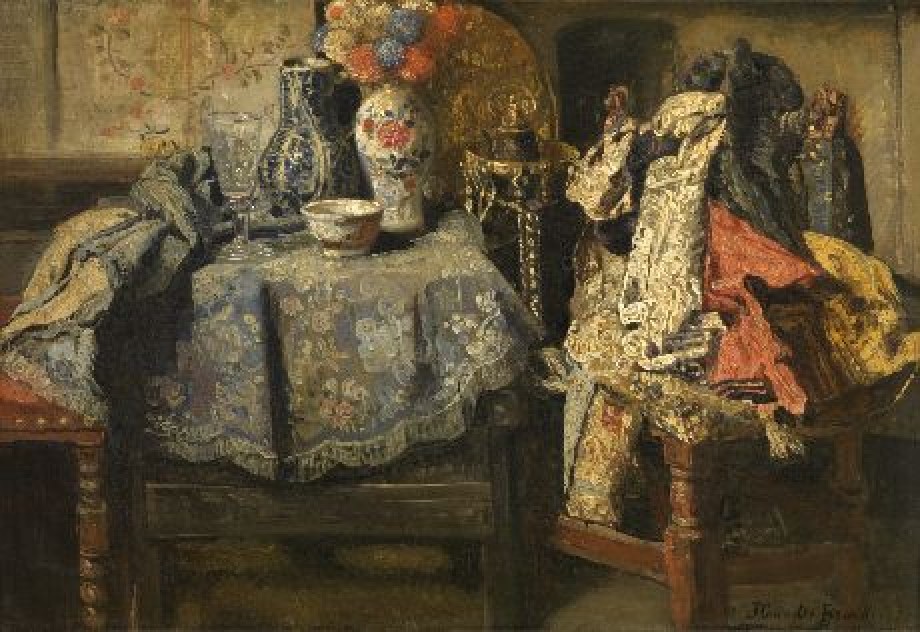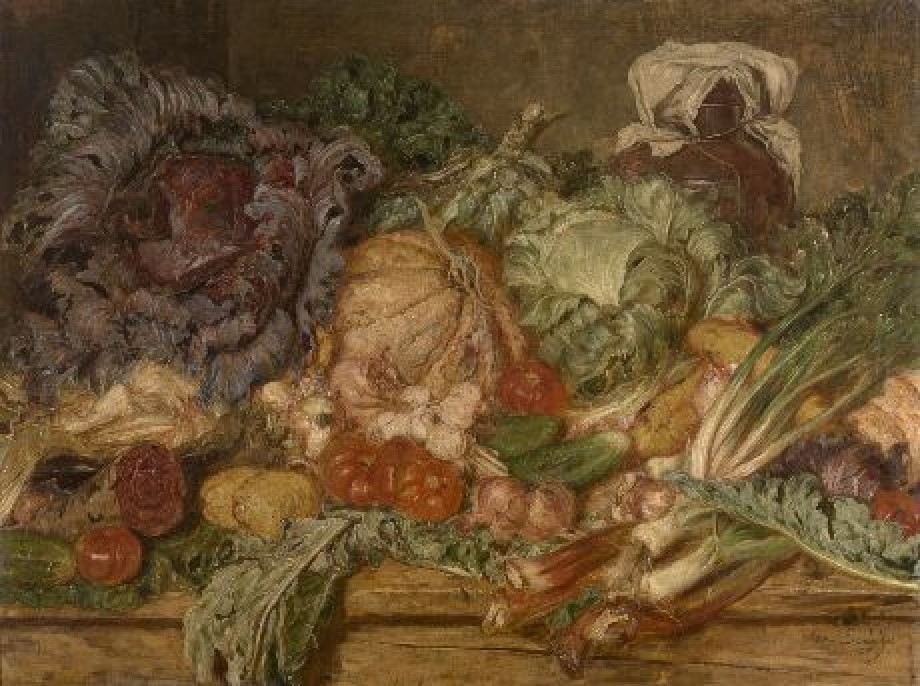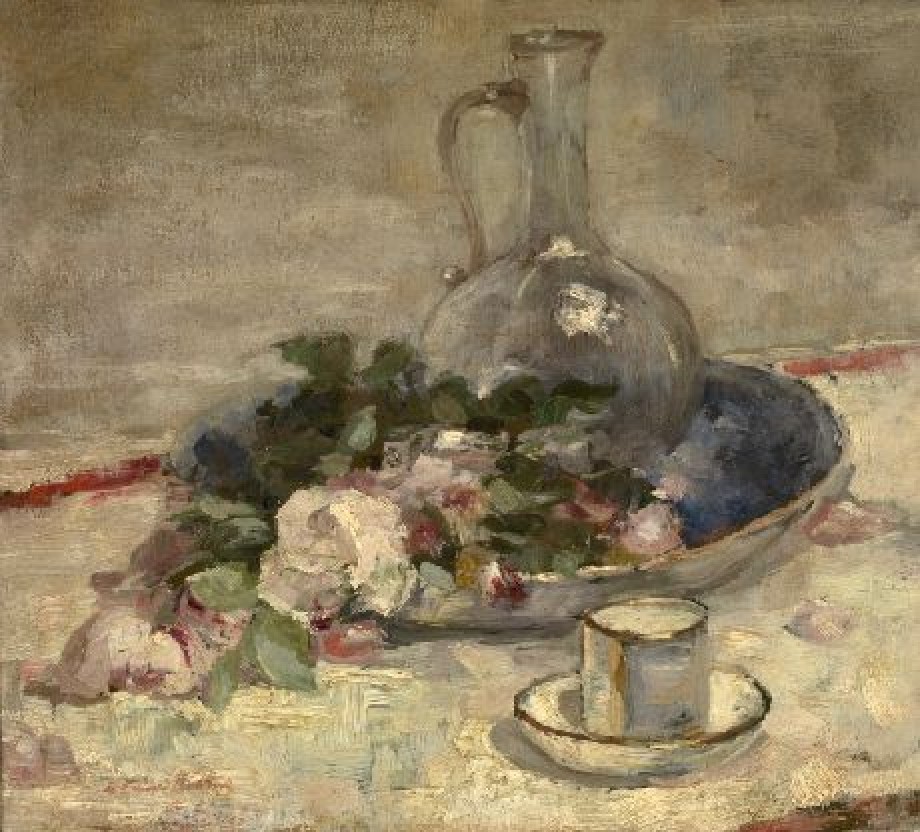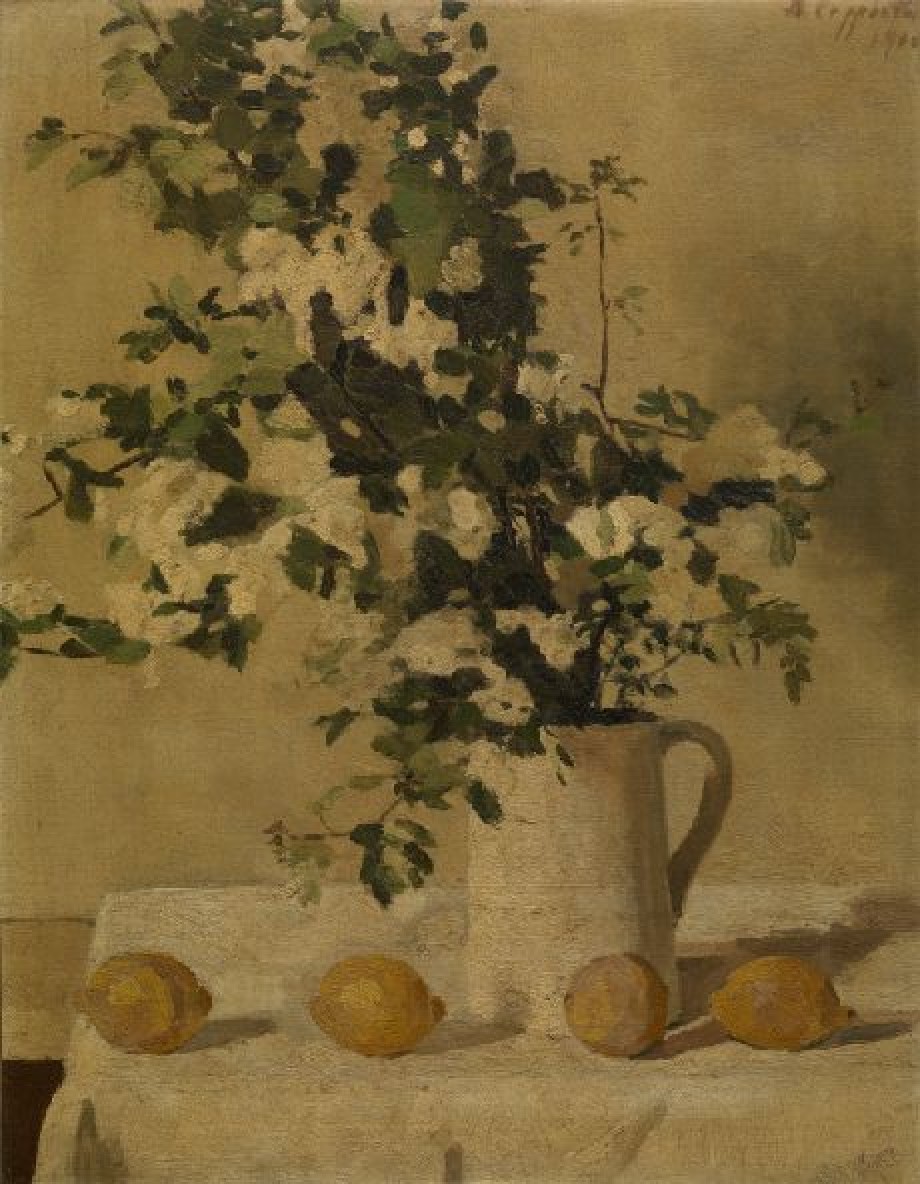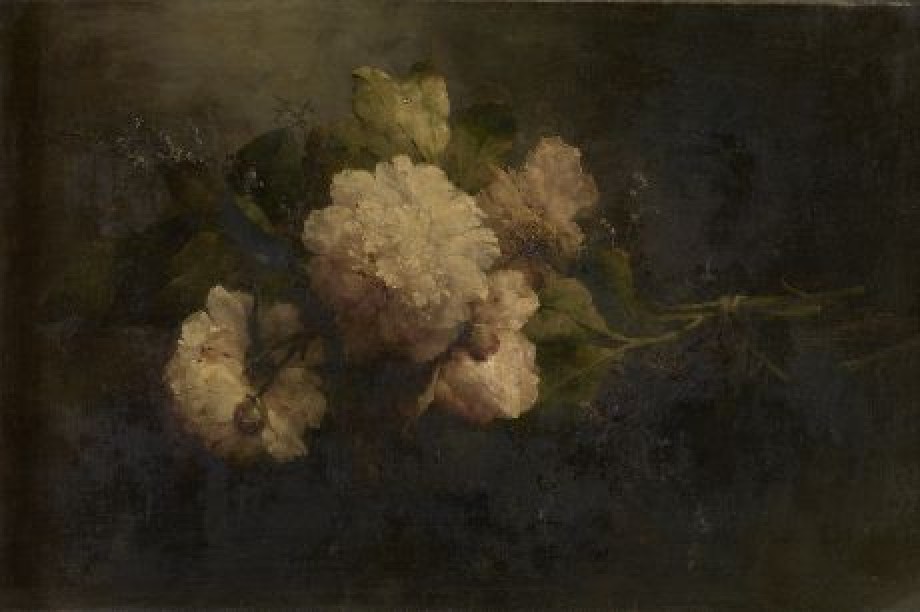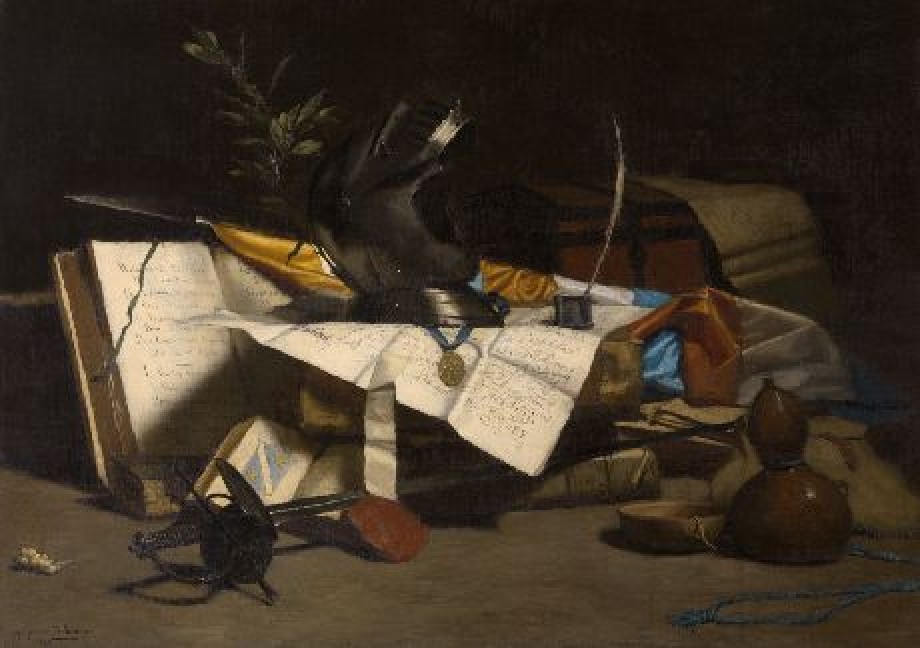Strawberries and Champagne

Artist / maker
Henri De Braekeleer (painter)Date
(1881-1885)Period
19th centuryCollection
Royal Museum of Fine Arts Antwerp
After painting 42 works for the Brussels art dealer Gustave Coûteaux between 1869 and 1876, Henri De Braekeleer’s output fell off, and he may even have painted nothing at all around 1879-1882. There is no known cause for that hiatus, either physical or psychological. Was he ill, down-hearted, no longer interested in painting? Around 1882-1883 he perked up and started…
Read more
After painting 42 works for the Brussels art dealer Gustave Coûteaux between 1869 and 1876, Henri De Braekeleer’s output fell off, and he may even have painted nothing at all around 1879-1882. There is no known cause for that hiatus, either physical or psychological. Was he ill, down-hearted, no longer interested in painting? Around 1882-1883 he perked up and started painting again. He evidently focused on still lifes, perhaps for the first time, which he sold to Brussels art lovers like the Rubens scholar Léon Lequime and the industrialist Eugène Marlier.
It is not known whether Edmond Huybrechts bought Strawberries and champagne directly from De Braekeleer, but in any event he had several works of his. Max Rooses felt that Huybrechts was the last Antwerp art collector ‘of exceptional importance’. He had inherited part of the collection of his uncle Pierre Huybrechts, and primarily bought contemporary paintings by Antwerp and Belgian artists, among them Henri Leys, Joseph Lies and Alfred Stevens, but he also had work by Théodore Géricault as well as Pieter Bruegel’s Census at Bethlehem (now in the Royal Museums of Fine Arts of Belgium in Brussels), in addition to works by other Flemish and Dutch masters.
None of De Braekeleer’s still lifes is dated, and many were conceived as fragments of an interior. Several of them contain cooking utensils and food laid out on a table decked with a white cloth to create a display. Sometimes he painted flowers. In this picture he has flowers in combination with two plates of strawberries, a bottle of champagne and a filled flûte à champagne. One assumes that champagne and strawberries bring out each other’s flavour.
When Vincent van Gogh studied in Antwerp for a few months in 1885-1886, he wrote to his brother Theo about works of art that particularly struck him. Among others he mentioned two studies by De Braekeleer: ‘fine things, two studies by Henri de Braekeleer, you know that he has nothing to do with the old De Braekeleer, I mean the one who’s a famous colourist and analyzes rigorously — Manet-like, at any rate as original as Manet. (...) with him it’s a strange, a very interesting endeavour to be literally true, and he stands very much on his own.’ The reference to Manet appealed to many connoisseurs of De Braekleleer’s work. They believe that the discovery of Manet’s Impressionism helped him to get over his artistic and/or existential impasse, although the truth of that is uncertain. The way in which this and other still lifes of his are constructed and executed is sketchy but remains traditional. De Braekeleer looks at reality – a still life or an interior – as a landscape painter would, a plein-airist.
Read less

